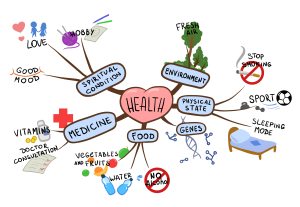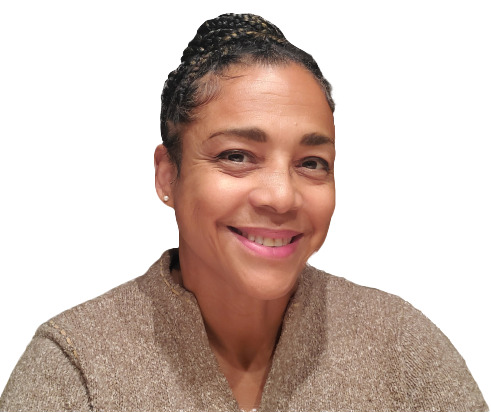STEM and ELT: 7 Science Reading Strategies
There is growing interest in how to teach English learners (ELs) science in the general education classroom especially because science contains a lot of reading and academic language. The strategies I discuss here, including the four strategies from Part 1 of this series, are intended for you to use immediately use in your classroom. The nine strategies come from the 2008 book Science for English Language Learners: K-12 Classroom Strategies (edited by Fathman & Crowther). Because of the depth and breadth of the reading skills strategy, today we will only be focusing on Skill 5 (Reading Skills), the fifth of the nine strategies to help ELs learn science.
You can find the first four in Part 1 of this blog series, and the remaining four strategies will be covered in Part 3. Following are the nine strategies:
- Connecting With Students
- Teacher Talk
- Student Talk
- Academic Vocabulary
- Reading Skills
- Writing Skills
- Collaborative Learning
- Scientific Language
- Process Skills of Inquiry
Remember, these strategies are listed and explained individually, but for ELs to gain a better understanding of the science content and the English language, the strategies should be used in combination.
Planning Reading Strategies
One of the most effective strategies to use to develop EL reading skills is to provide hands-on activities to activate prior knowledge and schema and to provide collaborative learning experiences before students are introduced to the text. By doing this, you can help your ELs derive meaning and understanding of the scientific concepts.
You should consider three phases when planning reading strategies: (1) Before learners read the text, (2) during the reading itself, and (3) after the text has been read. According to Gibbons’s Scaffolding Language, Scaffolding Learning, these are the “bridges” that provide the scaffolding that students need to bring meaning to the texts.
Before-Reading Activities
Here are a few before-reading activities that I like to use and have found great success with when teaching science, math, and STEM:

1. Using Visuals
Using visuals when teaching ELs is an excellent strategy because it provides an alternative mode of communication for the students. Visuals are known to improve students’ understanding and also allows the students an opportunity to interact with each other. By creating a mind map, which graphically shows student predictions of what they expect the reading to be about, you can begin to organize the student thinking into categories and show how their thoughts relate to each other. This can later be used as a collaborative group activity where the students can discuss their predictions and also as a means to connect vocabulary words.
1. Using Visuals
Using visuals when teaching ELs is an excellent strategy because it provides an alternative mode of communication for the students. Visuals are known to improve students’ understanding and also allows the students an opportunity to interact with each other. By creating a mind map, which graphically shows student predictions of what they expect the reading to be about, you can begin to organize the student thinking into categories and show how their thoughts relate to each other. This can later be used as a collaborative group activity where the students can discuss their predictions and also as a means to connect vocabulary words.
2. Using the Title, First Sentence, or Key Words to Make Predictions About the Text
In Scaffolding Language, Scaffolding Learning, Gibbons suggests using the title, first sentence, or key words of texts to get students thinking about what the book or topic may be about. You can have the students use turn and talk to discuss their predictions and then share it out with the class. The students would explain what they used to make their prediction—title, first sentence, or key words—and why they think their prediction is correct. With turn and talk, beginner ELs may feel more confident in speaking because they are talking only to one other person and not the whole class. You can ask the students questions like “What science do you think you are going to be learning?” and “What do you know about the topic?” This provides you with a formative assessment of the students’ prior knowledge and/or any misconceptions that you can address during the reading.
Be sure to use sentence frames to help your ELs in formulating their questions and thoughts so that they can be active participants during these activities.
During-Reading Activities
Now that students have some idea of what the reading will be about, it is time for the reading. Here are a few during-reading activities:
3. Effective Questioning
Try to bring the text alive by changing your voice, body language, and tone when reading. While reading, be sure to refer back to the class’ original predictions, the mind maps, or other strategies you used in the “before-reading” time. It is important to always find information in the book that addresses the predictions the students made and ask questions of the students to provide them with opportunities to discuss whether they want to change any of their earlier predictions.
The goal in conducting before and during reading phases is to not only engage the learners, but to provide the students with strategies that they can use when reading books alone. In other words, create “thinking readers”! It also demonstrates to the students, in real time, how to think and act like scientists, because scientists start off their experiments by making a hypothesis (guess) as to what may occur. They need to know if their hypothesis was correct or not correct, and then to try to figure out why. There is a saying that “scientists ask questions, engineers solve problems,” but both make hypotheses; making hypotheses is a staple occurrence in science and STEM. By asking questions of the students while reading, students learn to think critically. Asking questions also allows you as the teacher to identify student misconceptions, and it provides you with insight into their prior knowledge on the topic. Here is a helpful question grid that you can use, developed by Chuck Weiderhold.
4. Read the Text Multiple Times
Reading the text multiple times is highly impactful for your EL students. Repeated reads allow the EL to hear the information more than one time, providing them with increased comprehension. As a person married to a polyglot, I had noticed way before I started working with ELs that the more I heard a topic discussed, the better I became at comprehending it, and, more importantly, the more I began to remember common words and their meanings. This same thing happens for the ELs in your class.
This is extremely beneficial in particular for science because of the rich academic vocabulary specific to science. So, when you are reading, be sure to read the text aloud several times and draw attention to vocabulary words by writing them on the board, pointing them out when reading, or connecting the vocabulary word to a mind map created during the before phase. I also recommend having the students chorally repeat the word in order to help with recognition and/or pronunciation.
After-Reading Activities
5. Create a Story Map
A story map, similar to the mind map, is a visual representation of the main features of the story. The only difference is that the story map is specific to the story using facts and not predictions. In Scaffolding Language, Scaffolding Learning, Gibbons advises using the information acquired in the first two phases, before and during, to have the students address their predictions based on facts from the story map. Which predictions were correct and what supported that prediction? Or what predictions were incorrect and what information did you use to show that the prediction was incorrect?
6. Think-Pair-Share
Think-Pair-Share is an awesome after-reading activity. It promotes not only critical thinking, but it also provides an opportunity for all of your students to collaborate with each other. ELs need to continually use the new language in multiple registers in order to develop the new language. Register refers to the ways an individual uses language differently in different circumstances: in small group, peer to peer, and whole group. Each of these registers requires a different way to use the language. Think-Pair-Share can begin the process of allowing an EL to actively participate in a more informal setting as they develop more understanding of English academic language.
7. Exit Slips as a Formative Comprehension Check
Exit slips are one of my all-time favorite end-of -class activity! Yet, unfortunately, many teachers skip this part of the lesson for the sake of time. Exit slips are a type of formative assessment and can be used to guide the next day’s lesson. If the majority of your students leave the lesson with major deficits in understanding the lesson, how can you continue to teach the next piece successfully? Answer: You can’t! And for your ELs, this can be devastating to their comprehension of the content.
Exit slips can be as simple as:
- Write one science term you learned today.
- Rate your understanding of today’s discussion of photosynthesis on a scale from 1-10 and ask what can be done to improve your understanding.
- Are the three questions on the board true or false? Explain your answers.
Once again, this can be done in pairs, small groups, or the whole group. For ELs, it may be more beneficial to use pairs or small groups where they can feel more comfortable sharing their thoughts and have the opportunity to hear the language used in another register. Also, don’t forget about sentence starters! They are, again, a great way to ensure that your ELs can participate in the activity.
It is important to remember that students whose first language is not English will need supports in learning literacy. That support is compounded when learning specific content, like science, math, and STEM, because of the academic language. But by dividing the reading and activities into before, during, and after, ELs receive the input in manageable pieces. Here is a link to other before, during, and after reading strategies.
Are there reading strategies that you use when teaching science, math, or STEM to your ELs? If so, please share in the comments, below!

